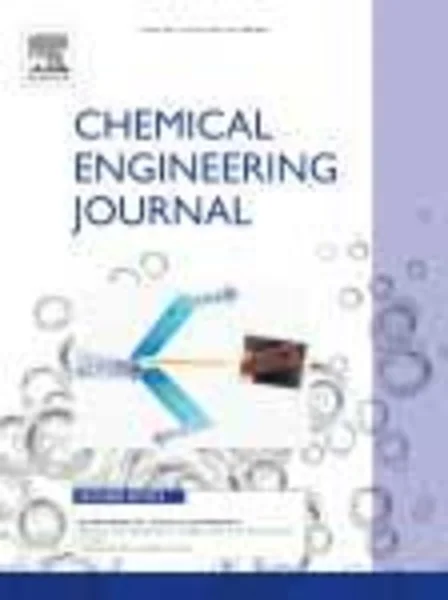-
modelling micropollutant degradation in uv/h2o2 systems: lagrangian versus eulerian method
جزئیات بیشتر مقاله- تاریخ ارائه: 1392/01/01
- تاریخ انتشار در تی پی بین: 1392/01/01
- تعداد بازدید: 522
- تعداد پرسش و پاسخ ها: 0
- شماره تماس دبیرخانه رویداد: -
the uv/h2o2 system is an effective barrier against micropollutants. the degradation of micropollutants largely differs due to variations in target compounds, water matrix composition and uv system. models can account for these varying hydraulic and photochemical conditions. computational fluid dynamics (cfd) models are combined with uv radiation, transport and (photo)chemical models to compute the degradation of compounds in a uv system. in this paper several modeling approaches with different levels of complexity are discussed. depending on the type of uv system, a full cfd model, that resolves the hydraulics, uv radiation and transport of compounds, or simplified approaches that assume analytical hydraulic profiles and/or take the average of the fluence rate distribution. for the transport of chemical compounds, two methods were evaluated: the lagrangian method and the eulerian method. the eulerian method calculates compound’s concentrations at a fixed computational mesh and is most often used for compound degradation prediction in uv/h2o2 systems. the lagrangian method calculates compound’s concentrations along the tracks of individual particles. for a collimated beam and a pilot-scale flow-through reactor, both methods resulted in similar degradation predictions. this research shows that both methods can be used for oxidation predictions in uv/h2o2 systems.
مقالات جدیدترین رویدادها
-
استفاده از تحلیل اهمیت-عملکرد در ارائه الگوی مدیریت خلاقیت سازمانی و ارائه راهکار جهت بهبود
-
بررسی تاثیر ارزش وجوه نقد مازاد بر ساختار سرمایه شرکت های پذیرفته شده در بورس اوراق بهادار تهران
-
بررسی تأثیر سطح افشای ریسک بر قرارداد بدهی شرکت های پذیرفته شده در بورس اوراق بهادار تهران
-
بررسی تأثیر رتبه بندی اعتباری مبتنی بر مدل امتیاز بازار نوظهور بر نقد شوندگی سهام با تأکید بر خصوصی سازی شرکت ها
-
تأثیر آمیخته بازاریابی پوشاک ایرانی بر تصویر ذهنی مشتری پوشاک ایرانی (هاکوپیان)
-
ارزیابی و بررسی مکان یابی کاربری بهداشتی-درمانی نمونه موردی: (بیمارستان فاطمیه شهرستان شاهرود)
-
بهبود فضای کسب و کار؛ راهبرد محرومیت زدایی و تحقق اقتصاد مقاومتی
-
مقایسه تطبیقی تحلیلی معماری افشاری ایران با معماری مغولان کبیر هند نمونه موردی: کاخ خورشید کلات و تاج محل آگرا
-
تحلیل آماری دلایل استفاده و عدم استفاده دوچرخه بعنوان یک مد حمل و نقلی در سفرهای شهری (مطالعه موردی شهر آمل)
-
failure analysis of welded 0cr13al tube bundle in a heat exchanger
مقالات جدیدترین ژورنال ها
-
مدیریت و بررسی افسردگی دانش آموزان دختر مقطع متوسطه دوم در دروان کرونا در شهرستان دزفول
-
مدیریت و بررسی خرد سیاسی در اندیشه ی فردوسی در ادب ایران
-
واکاوی و مدیریت توصیفی قلمدان(جاکلیدی)ضریح در موزه آستان قدس رضوی
-
بررسی تاثیر خلاقیت، دانش و انگیزه کارکنان بر پیشنهادات نوآورانه کارکنان ( مورد مطالعه: هتل های 3 و 4 ستاره استان کرمان)
-
بررسی تاثیر کیفیت سیستم های اطلاعاتی بر تصمیم گیری موفق در شرکتهای تولیدی استان اصفهان (مورد مطالعه: مدیران شرکتهای تولیدی استان اصفهان)
-
بررسی تأثیر ترکیب هیئت مدیره بر سودآوری آتی شرکت های بیمه پذیرفته شده در بورس اوراق بهادار تهران
-
بررسی رابطه حافظه ی فعال و توجه پایدار با فراشناخت در بیماران مبتلا به اختلال وسواس فکری عملی
-
پیش بینی کیفیت رابطه زناشویی براساس تاب آوری زوجین
-
جنبش های قانون اساسی گرایی در اروپای دوره قرون وسطی
-
مروری بر نقش سیستم آموزش ضمن خدمت بر ریزش پرسنل (مورد مطالعه : شرکت پترودانیال)




سوال خود را در مورد این مقاله مطرح نمایید :